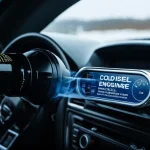Step-by-step exhaust installation guide for the BMW F850GS
When undertaking a motorcycle exhaust replacement on your BMW F850GS, preparation is crucial. Begin by setting up a clean, well-lit workspace to ensure you can work safely and efficiently. Gather essential tools such as socket wrenches, screwdrivers, and possibly torque wrenches. Having the necessary tools at hand streamlines the process and prevents interruptions.
Start by carefully removing the stock exhaust system. This involves loosening and removing bolts connecting the exhaust pipe to the engine manifold and mounting brackets. Keep track of all hardware, as you may need some components to install the new exhaust. Be mindful of heat shields and sensors attached to the stock exhaust; disconnect them gently to avoid damage.
In parallel : Ultimate tutorial for triumph bonneville t100: step-by-step clutch cable replacement guide
Next, follow the BMW F850GS DIY guide instructions for installing the new exhaust. Position the new exhaust carefully, aligning mounting points before tightening bolts to manufacturer-specified torque settings. Proper alignment is essential for optimal performance and to avoid exhaust leaks. Reconnect any sensors or heat shields detached earlier. Using the BMW F850GS DIY guide during installation helps ensure the process is accurate and prevents common mistakes during motorcycle exhaust replacement.
Choosing the right exhaust and required parts
Maximize your BMW F850GS performance with the perfect exhaust system.
In parallel : Mastering the art of chain maintenance: deep clean and lubricate your honda cbr600rr for optimal performance
When selecting the best exhaust for BMW F850GS, compatibility should be your first consideration. Ensure the exhaust system is specifically designed for the F850GS model to avoid fitment issues and maintain optimal performance. Many aftermarket motorcycle exhaust options are available, but not all offer precise engineering to match the bike’s specifications.
Quality features such as materials and coatings significantly impact durability and sound. Look for exhausts made from stainless steel or titanium, which resist corrosion and reduce weight. A good warranty often reflects the manufacturer’s confidence in the product’s longevity. Prioritize exhaust systems that include reliable warranty coverage to safeguard your investment.
Essential components like gaskets, mounting brackets, and bolts come with most exhaust kits but confirm their inclusion to guarantee a smooth installation process. Missing hardware can delay upgrades or lead to improper fitting. In some cases, additional adapters or mid-pipes may be necessary, depending on your customization goals.
Choosing the right exhaust is critical not just for performance but also for legal noise limits and emissions compliance. Take time to research and select a system that enhances your ride without complications.
Key safety measures and legal considerations
When installing or replacing an exhaust system on your BMW F850GS, exhaust installation safety should be a priority. Always wear personal protective equipment such as gloves and safety glasses to protect against burns from hot surfaces and cuts from sharp edges. Handling exhaust components carefully prevents injuries and ensures a secure fit.
Understanding motorcycle exhaust legal regulations is essential. Many regions impose strict emissions and noise limitations to reduce environmental impact and community disturbance. For example, the BMW F850GS must comply with specific emissions standards, so any aftermarket exhaust should not exceed these limits. Installing a non-compliant exhaust can lead to fines or vehicle inspection failures.
Furthermore, BMW F850GS emissions compliance demands that the catalytic converters and sensors remain intact or are replaced with approved alternatives. Removing these components may improve performance but will likely violate legal standards.
Environmental responsibility is also key. Proper disposal of old exhaust parts and awareness of your motorcycle’s impact contribute to sustainability. Replacing exhaust systems with eco-friendly options helps preserve air quality and aligns with increasing environmental regulations on motorcycles today. Following these safety and legal guidelines ensures that your BMW F850GS runs efficiently and responsibly.
Troubleshooting installation issues and common mistakes
Installing an exhaust system on a BMW F850GS can present challenges, particularly with exhaust installation troubleshooting. The most common issues involve fitting and alignment problems, which are crucial to address early. Incorrect alignment not only affects performance but can also lead to stress on mounting points, causing premature damage. Ensuring all brackets and clamps are correctly positioned and tightened to manufacturer specifications prevents these setbacks.
Leaks and rattles frequently arise when gaskets or seals are improperly installed or damaged. These issues often produce abnormal noises, which can be mistaken for engine problems. A thorough inspection of mating surfaces for debris or imperfections, combined with replacing worn seals, will solve most leak issues.
For riders attempting motorcycle exhaust DIY tips, attention to avoid frequent errors is essential. Do not overtighten bolts as this may strip threads or deform flanges. Similarly, neglecting to use anti-seize compounds on threads can cause future removal difficulties. Proper torque settings paired with methodical sequencing during installation ensure stability and longevity.
By mastering these troubleshooting points, riders can significantly reduce the time and frustration involved in BMW F850GS exhaust problems, resulting in smoother rides and enhanced durability.
After-installation checks and performance testing
After completing the post-installation exhaust check on your BMW F850GS, it’s crucial to inspect every connection and mounting point carefully. Ensure that bolts are tightened to the manufacturer’s recommended torque settings to avoid loosening during rides. Loose fittings can lead to exhaust leaks or vibrations that compromise safety and comfort.
Next, test for leaks and abnormal sounds. Turn on the engine and listen closely near the exhaust joints and muffler. A proper seal means smooth, consistent engine noise without hissing or rattling, which indicates a leak or loose component. Addressing these issues promptly prevents performance loss and possible damage.
Once the hardware inspection is complete, assess the BMW F850GS performance after exhaust install. Start with a gradual ride to monitor any changes in engine responsiveness and throttle response. The new exhaust should improve airflow, enhancing both acceleration and fuel efficiency if properly installed. Pay attention to ride quality—if you experience rough idling or power dips, it may indicate incorrect installation or the need for a fuel map adjustment.
Finally, incorporate routine motorcycle maintenance checks after every few rides to ensure continued optimal performance. Consistent monitoring helps detect emerging issues early, keeping your F850GS in peak condition.


